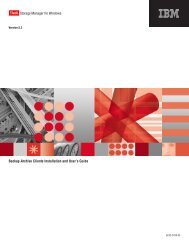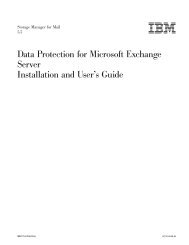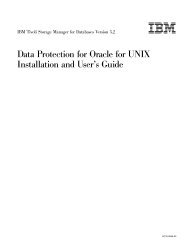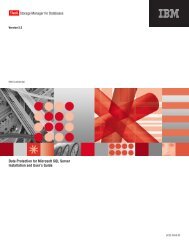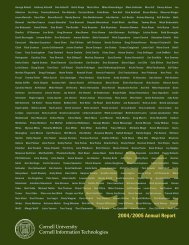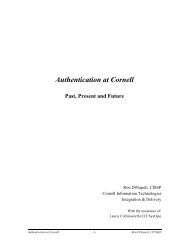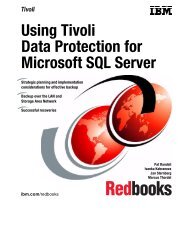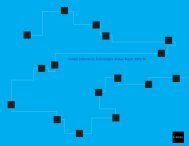Backing Up Oracle - Computing at Cornell
Backing Up Oracle - Computing at Cornell
Backing Up Oracle - Computing at Cornell
You also want an ePaper? Increase the reach of your titles
YUMPU automatically turns print PDFs into web optimized ePapers that Google loves.
4.6 TSM server consider<strong>at</strong>ions for <strong>Oracle</strong> backups<br />
Whenever you use the TSM server to backup and restore d<strong>at</strong>a objects, it is of<br />
the utmost importance to consider which management class the d<strong>at</strong>a objects<br />
will be bound to. This is true of both API and backup-archive clients. Failure<br />
to do so will result in storing the d<strong>at</strong>a objects in one of three situ<strong>at</strong>ions:<br />
too long, too short, or just right.<br />
It is highly unlikely th<strong>at</strong> you will manage the objects “just right” if you do not<br />
take the time to define your storage requirements, configure the TSM server<br />
appropri<strong>at</strong>ely, and configure the TSM client to use the correct management<br />
classes. If you store the d<strong>at</strong>a objects for too long, then you waste space and<br />
storage resources on the TSM server. If you store the d<strong>at</strong>a objects for too<br />
short a time, then you do not have the required files when you need them.<br />
Each of the TDP products and any product th<strong>at</strong> uses the TSM API should<br />
have a section in the document<strong>at</strong>ion th<strong>at</strong> describes exactly wh<strong>at</strong> retention<br />
settings the product uses and how to bind the d<strong>at</strong>a objects to the appropri<strong>at</strong>e<br />
management class. The TSM server cannot and does not know how long a<br />
client program needs to keep the d<strong>at</strong>a objects. This must be done by the<br />
client.<br />
4.6.1 How TDP for <strong>Oracle</strong> stores d<strong>at</strong>a objects<br />
D<strong>at</strong>abase objects stored on the TSM server by TDP for <strong>Oracle</strong> are stored as<br />
backup objects. Each <strong>Oracle</strong> backup is stored as a unique object by<br />
gener<strong>at</strong>ing a random character string as the low level qualifier (LL_NAME).<br />
The RMAN script can control wh<strong>at</strong> the LL_NAME or backup piece name is by<br />
using the RMAN form<strong>at</strong> command.<br />
If using the form<strong>at</strong> command, you should gener<strong>at</strong>e unique backup piece<br />
names by either random character string (%U option) or timestamp (%s and<br />
%t). This is documented in the <strong>Oracle</strong> RMAN manual. Failure to do so will<br />
cause inconsistency between the RMAN c<strong>at</strong>alog and the TSM server.<br />
Using unique names means th<strong>at</strong> the <strong>Oracle</strong> backups must be manually<br />
inactiv<strong>at</strong>ed. This is done by alloc<strong>at</strong>ing a channel for deletion using the same<br />
nodename and filespace name th<strong>at</strong> was used to perform the initial backup<br />
(see 9.6.6, “Deleting the backup piece from RMAN” on page 139). This also<br />
means th<strong>at</strong> the management class to which the backup objects are bound<br />
should have retention settings th<strong>at</strong> change the inactiv<strong>at</strong>ed backup objects to<br />
be expired immedi<strong>at</strong>ely. The retention settings for a backup copy group th<strong>at</strong><br />
would facilit<strong>at</strong>e this is RETONLY=0 and VERDELETED=0.<br />
Chapter 4. TSM server consider<strong>at</strong>ions 47



